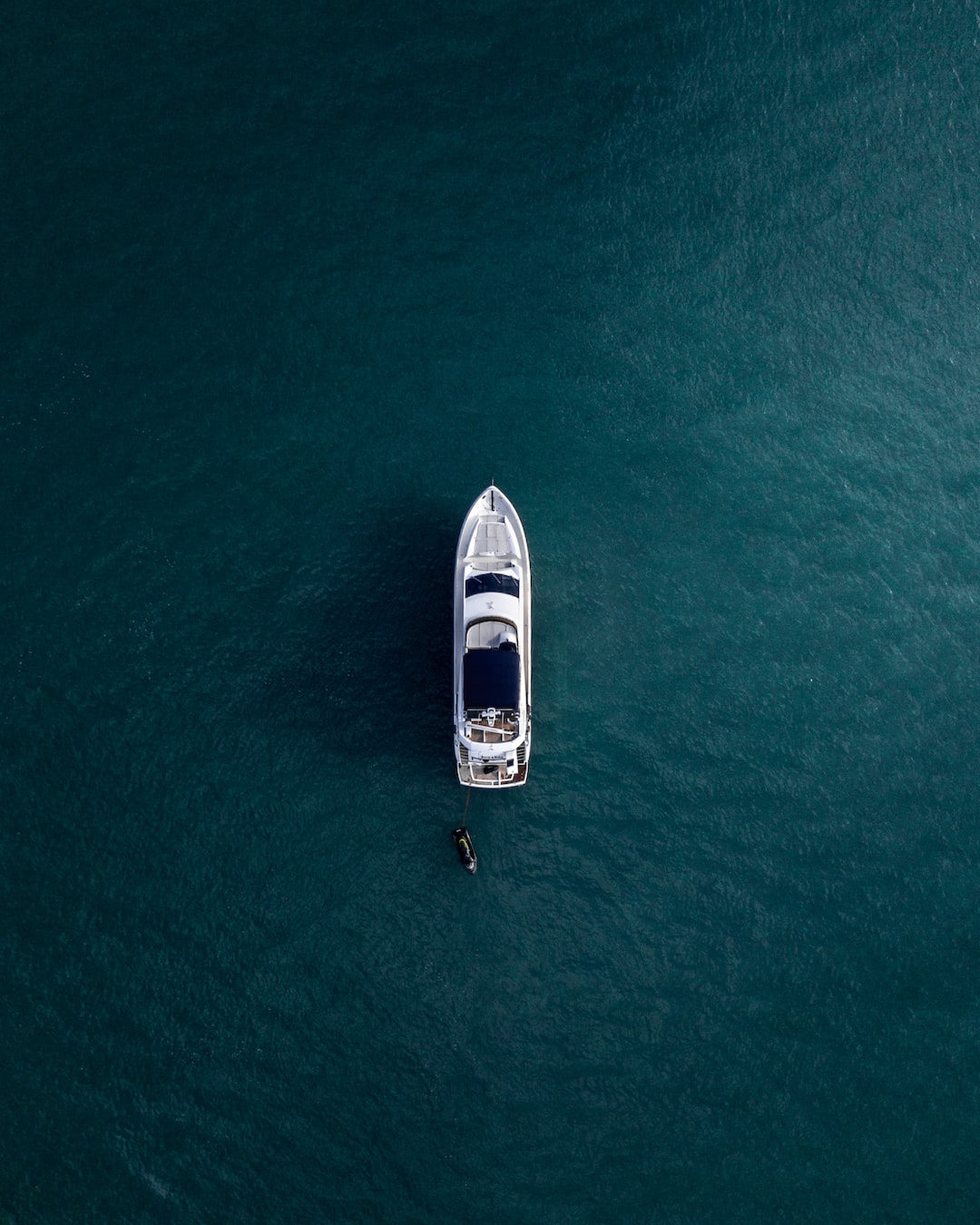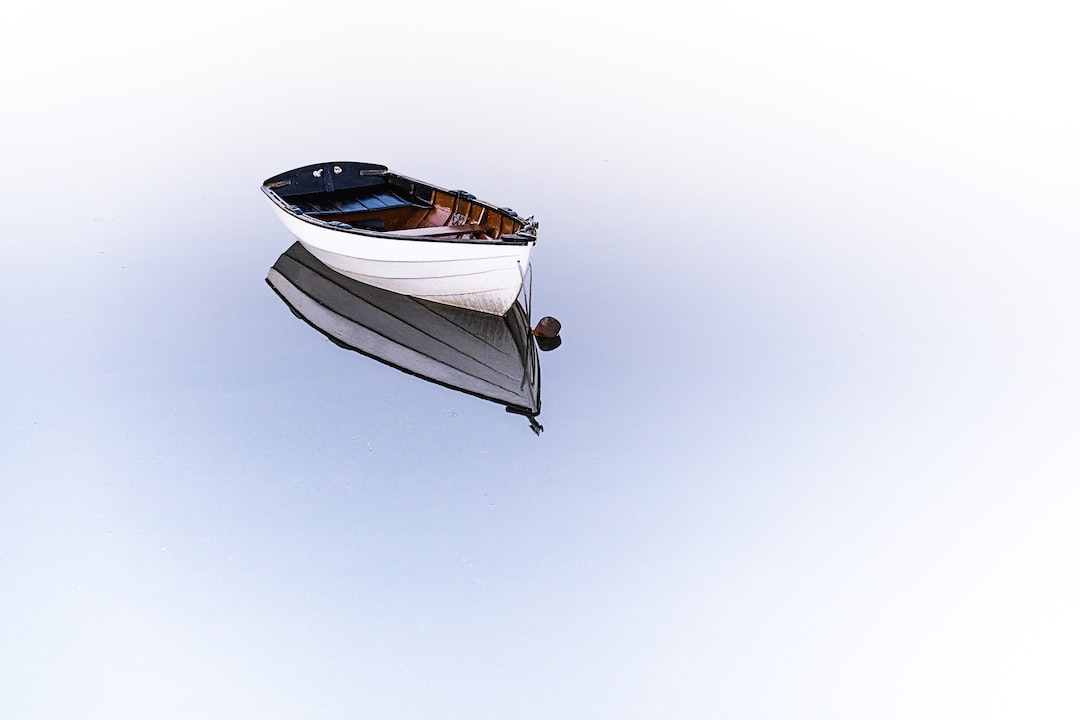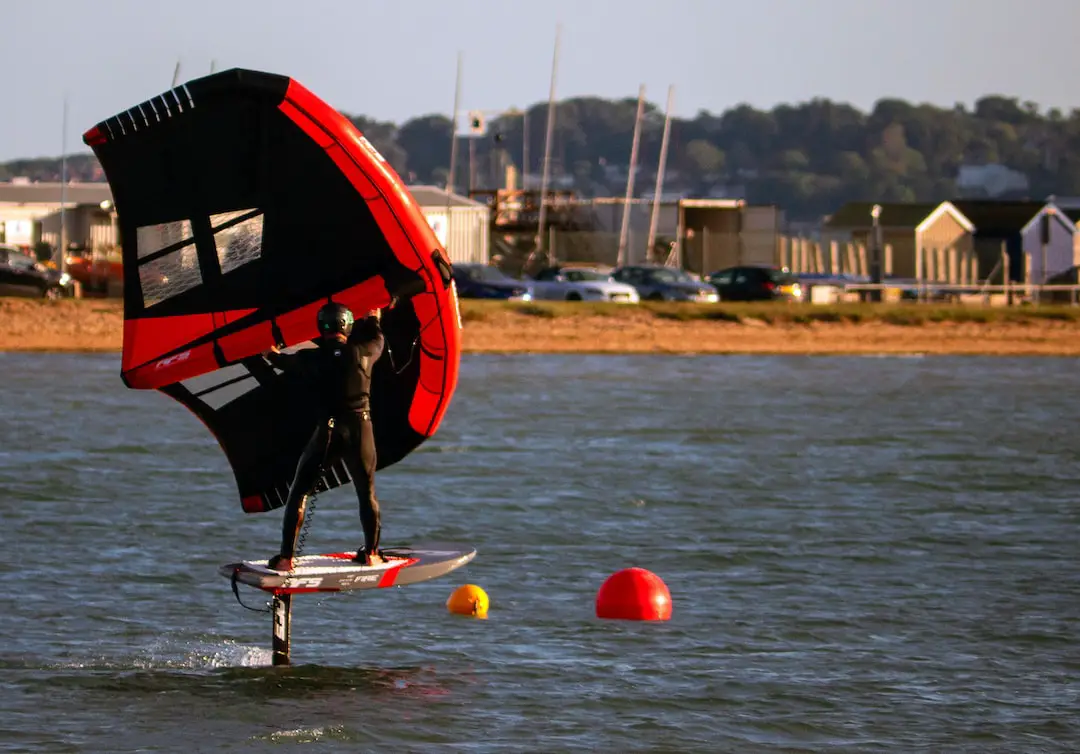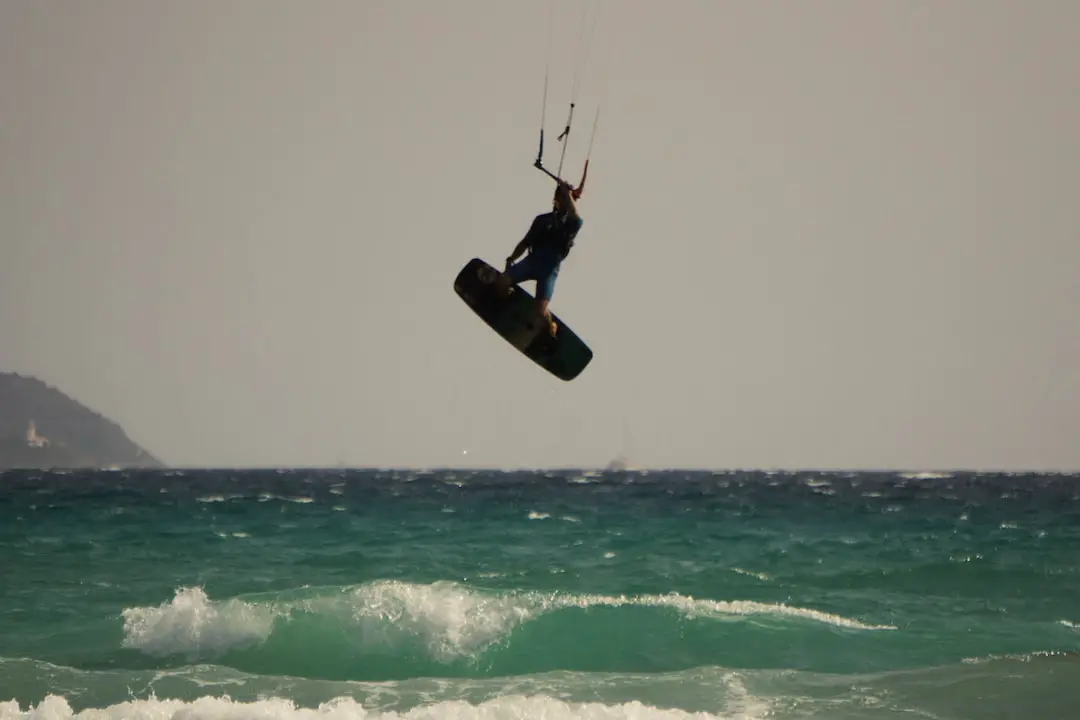Support our hydrofoil educational content for free when you purchase through links on our site. Learn more
How to Ride a Hydrofoil Behind a Boat: Mastering the Art of Hydrofoil Boarding [2024]
Have you ever watched someone gracefully gliding above the water’s surface on a hydrofoil board and wondered how they do it? Hydrofoil boarding is an exhilarating water sport that combines the thrill of surfing with the smoothness of flying. In this article, we will guide you through the process of riding a hydrofoil behind a boat, from getting started to mastering advanced techniques. So grab your board and let’s dive in!
Quick Answer
To ride a hydrofoil behind a boat, follow these steps:
- Start by getting comfortable in the water and wearing the necessary safety gear, such as a life jacket and helmet.
- Position yourself in the water with the hydrofoil board perpendicular to the boat’s direction.
- Hold onto the tow rope and let the boat pull you up slowly.
- Once you’re up on the board, shift your weight forward to lift the hydrofoil out of the water.
- Maintain a balanced stance and use subtle movements to control your speed and direction.
- Practice turning, carving, and riding waves to enhance your hydrofoil boarding skills.
CHECK PRICE on: Hydrofoil Boards | Hydrofoil Equipment
Quick Tips and Facts
- Hydrofoil boarding requires practice and patience. Don’t get discouraged if you don’t master it right away.
- Start with a larger and more stable hydrofoil board if you’re a beginner.
- Wear a wetsuit or rash guard to protect your skin from the water and sun.
- Keep a safe distance from other boats, swimmers, and obstacles while riding a hydrofoil.
- Hydrofoil boarding can be physically demanding, so make sure you’re in good physical condition before attempting it.
Background: The Evolution of Hydrofoil Boarding

Hydrofoil boarding has a rich history that dates back to the early 20th century. It was initially developed for military purposes, but over time, it evolved into a popular recreational activity. Today, hydrofoil boards come in various shapes and sizes, catering to different skill levels and riding styles. Let’s explore the key moments in the evolution of hydrofoil boarding.
1. The Birth of Hydrofoil Boarding
In the 1920s, Italian engineer Enrico Forlanini invented the first hydrofoil boat, which used wings to lift the hull out of the water. This groundbreaking invention laid the foundation for hydrofoil technology and inspired water sports enthusiasts to experiment with hydrofoil boards.
2. Hydrofoil Surfing Takes Flight
In the 1960s, a group of surfers in Hawaii, including Laird Hamilton and Dave Kalama, began experimenting with hydrofoil technology to ride waves more efficiently. They attached hydrofoils to surfboards, allowing them to glide above the water’s surface and ride waves with unparalleled speed and smoothness.
3. The Rise of Foilboarding
In recent years, foilboarding has gained widespread popularity among water sports enthusiasts. Foilboards feature a hydrofoil attached to the bottom of a surfboard, kiteboard, or stand-up paddleboard. This innovative design allows riders to harness the power of hydrodynamics and experience the thrill of flying above the water.
4. Advancements in Hydrofoil Technology
Advancements in hydrofoil technology have led to the development of lighter, more efficient, and more stable hydrofoil boards. Manufacturers have experimented with different materials, shapes, and designs to optimize performance and enhance the rider’s experience. Today, hydrofoil boards are more accessible than ever, with options available for riders of all skill levels.
5. Hydrofoil Racing and Competitions
Hydrofoil racing has emerged as a competitive sport, attracting top athletes from around the world. Races take place in various formats, including slalom, long-distance, and freestyle events. These competitions showcase the speed, agility, and skill required to master hydrofoil boarding.
Key Moments in Hydrofoil Boarding History

- 1920s: Enrico Forlanini invents the first hydrofoil boat.
- 1960s: Laird Hamilton and Dave Kalama pioneer hydrofoil surfing in Hawaii.
- Recent years: Foilboarding gains popularity as a thrilling water sport.
- Advancements in hydrofoil technology lead to lighter and more efficient boards.
- Hydrofoil racing becomes a competitive sport, attracting top athletes.
How to Get Up on a Hydrofoil Behind a Boat
Getting up on a hydrofoil behind a boat requires a combination of technique, balance, and coordination. Follow these steps to get started:
-
Safety First: Before you begin, make sure you’re wearing the necessary safety gear, including a life jacket and helmet. Safety should always be your top priority.
-
Positioning: Position yourself in the water with the hydrofoil board perpendicular to the boat’s direction. Hold onto the tow rope and keep your arms slightly bent.
-
Slow and Steady: As the boat starts moving, allow it to pull you up slowly. Keep your knees slightly bent and your weight centered over the board.
-
Lift the Foil: Once you’re up on the board, shift your weight forward to lift the hydrofoil out of the water. This will reduce drag and allow you to glide smoothly.
-
Balance and Control: Maintain a balanced stance with your feet shoulder-width apart. Use subtle movements and shifts in weight to control your speed and direction. Keep your eyes focused on the horizon to maintain stability.
-
Practice Makes Perfect: Practice turning, carving, and riding waves to improve your hydrofoil boarding skills. Experiment with different body positions and weight distributions to find what works best for you.
How to Hydrofoil for Beginners
If you’re new to hydrofoil boarding, here are some tips to help you get started:
-
Choose the Right Board: Start with a larger and more stable hydrofoil board, as it will provide better stability and control. As you gain experience, you can transition to smaller and more maneuverable boards.
-
Master the Basics: Before attempting to ride a hydrofoil behind a boat, make sure you’re comfortable with basic water sports skills, such as swimming, surfing, or wakeboarding. These skills will provide a solid foundation for hydrofoil boarding.
-
Take Lessons: Consider taking lessons from a certified instructor who specializes in hydrofoil boarding. They can teach you proper technique, safety precautions, and help you progress faster.
-
Start in Calm Waters: Begin your hydrofoil boarding journey in calm and flat waters. This will make it easier to get up on the board and maintain balance. As you gain confidence, you can gradually transition to more challenging conditions.
-
Be Patient: Hydrofoil boarding requires patience and perseverance. Don’t get discouraged if you don’t master it right away. With practice and determination, you’ll gradually improve and unlock new possibilities on the water.
What Speed Do You Foil Behind a Boat?
The ideal speed for hydrofoil boarding behind a boat depends on various factors, including your skill level, the size of your hydrofoil board, and the water conditions. As a general guideline, most riders find that a boat speed between 10 to 15 miles per hour (16 to 24 kilometers per hour) provides a good balance between stability and maneuverability. However, experienced riders can handle higher speeds, while beginners may prefer slower speeds to build confidence.
How Hard Is It to Ride a Hydrofoil?
Riding a hydrofoil behind a boat can be challenging, especially for beginners. It requires a combination of balance, coordination, and technique. The learning curve can vary depending on your previous water sports experience and physical fitness. While some riders may pick it up quickly, others may require more time and practice to master the art of hydrofoil boarding. However, with dedication and perseverance, anyone can learn to ride a hydrofoil and experience the thrill of gliding above the water.
FAQ

How do you get up on a hydrofoil behind a boat?
To get up on a hydrofoil behind a boat, follow these steps:
- Position yourself in the water with the hydrofoil board perpendicular to the boat’s direction.
- Hold onto the tow rope and let the boat pull you up slowly.
- Shift your weight forward to lift the hydrofoil out of the water.
- Maintain a balanced stance and use subtle movements to control your speed and direction.
Read more about “How Does Wake Foiling Work? …”
How do you hydrofoil for beginners?
For beginners, here are some tips to get started with hydrofoil boarding:
- Choose a larger and more stable hydrofoil board.
- Master basic water sports skills before attempting hydrofoil boarding.
- Take lessons from a certified instructor.
- Start in calm and flat waters.
- Be patient and practice regularly.
Read more about “What are the Tips for Hydrofoiling Beginners …”
What speed do you foil behind a boat?
The ideal speed for hydrofoil boarding behind a boat is typically between 10 to 15 miles per hour (16 to 24 kilometers per hour). However, the optimal speed may vary depending on factors such as skill level, board size, and water conditions.
Read more about “How Does a Foil Board Work? …”
How hard is it to ride a hydrofoil?
Riding a hydrofoil can be challenging, especially for beginners. It requires balance, coordination, and technique. The learning curve varies from person to person, but with practice and perseverance, anyone can learn to ride a hydrofoil.
Read more about “How hard is it to ride a hydrofoil?”
Conclusion

Riding a hydrofoil behind a boat is an exhilarating experience that combines the thrill of surfing with the smoothness of flying. It requires practice, patience, and a willingness to push your limits. Whether you’re a beginner or an experienced rider, hydrofoil boarding offers endless possibilities for exploration and excitement on the water.
So, grab your hydrofoil board, follow the steps we’ve outlined, and embark on your hydrofoil boarding adventure. Remember to prioritize safety, take lessons if needed, and enjoy the journey of mastering this incredible water sport.
Recommended Links:
- Hydrofoil Basics
- Hydrofoil Equipment Reviews
- Advanced Hydrofoiling Techniques
- Hydrofoil History
- What are the Tips for Hydrofoiling Beginners 2024
Reference Links:
- Enrico Forlanini – Wikipedia
- Laird Hamilton – Wikipedia
- Dave Kalama – Wikipedia
- Hydrofoil Racing – International Kiteboarding Association
- Hydrofoil Surfing – Surfertoday
YouTube Video:
Now, it’s time to take the plunge and experience the incredible sensation of riding a hydrofoil behind a boat. Happy foiling!
✅




